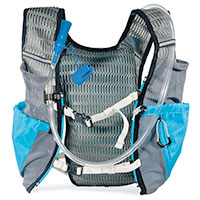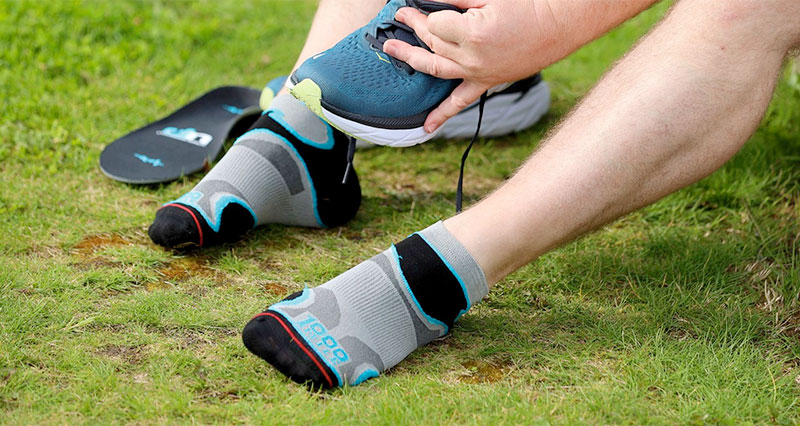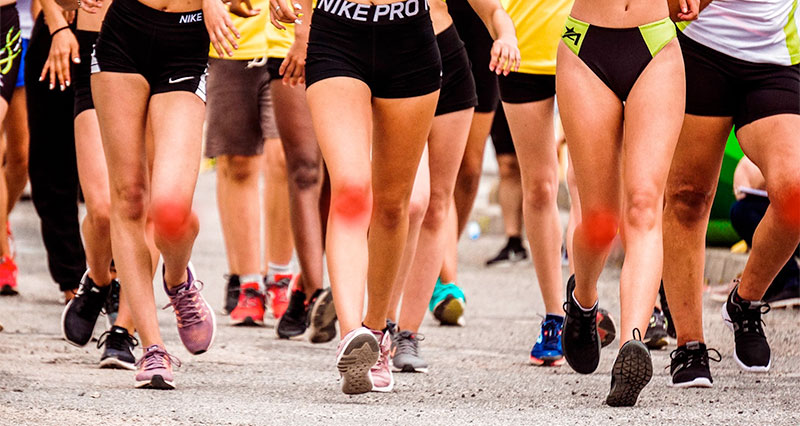Here are our top 10 tips on how to run a marathon. The marathon itself is only a small part of the overall marathon story and effort. Success in the marathon is down to hours of specific marathon training of both the physical and mental aspects that the marathon bears.
All of your work is during the months of this specific marathon training. The marathon run itself is the reward at the end of your marathon training program. The trick to completing the marathon or performing to your desired standard is to survive this specific marathon training program. To survive this marathon training means to be fully prepared, injury free, fresh, confident and to perform on the day and achieve what you set out to do.

Running Hydration Packs
Top 10 tips on how to run a marathon
- Plan Ahead
- Have & go for your Goal!
- Train as you mean to go on…
- Get Strong
- Consistency is Key
- Warm Up, Warm Down & Stretch
- Cross Train
- P.M.A.
- Fuel and Hydrate
- R&R (Rest & Recovery)
Plan ahead
There are so many reasons for forward planning. Use a Training diary to keep track of your progress and to keep you on course for the goal ahead. Planning ahead will serve as a great motivator, help identify milestones and allow you to compare and contrast your performance as you train. Use the data to keep tabs on how you are faring. As well as motivating you it will assist in leaving no stone unturned in your target setting and training. Ticking off your runs as completed or cross-training sessions will inspire you and give you confidence.
Work out when you will need to replace your running shoes and when a new pair will be at their best possible condition come what the day of the marathon itself. Do you really want to risk running in running shoes that are close to the end of their effectiveness? Do you want to be using brand new running shoes for the marathon? Record when you bought your shoes and how many miles you have run in them. Have a couple of pairs in use perhaps? This seems to be a favoured option for many experienced runners.
What kit will you be wearing? Test it out to make sure that it is what you feel good in.
It is likely that the training will start way ahead of the event itself so what will the weather conditions be like for the marathon? Can you replicate these at all? Is there a possibility that conditions could vary?
Study the marathon course. Are there any aspects of the course you will need to be familiar with and train specifically for? Ultimately good planning will push you towards your marathon goal.

Running Hydration Packs
Have & Go for your Goal!
Let’s make no bones about this; the marathon is the big one and is a great feat; not for the faint-hearted. It does not matter if you have run marathons before if you are an experienced runner generally or you are just setting out; whatever your level or pace the marathon will take some considered planning and preparation.
However, in order to set the right plans and prepare correctly, you do need to know what you want to achieve. Set yourself a goal and challenge yourself whilst remaining realistic. Think about what you want to achieve in the marathon. If you just want to get around the course then there is still a target for doing so; whether this is just to keep running or finish by a certain time. Having something to aim for like this allows you to set your training plan up to work towards.
Milestones can also be cast in place to allow you to check your performance to date. If it is a specific time span you are looking to achieve or indeed better then once again this will (with some thought of course) set the scene for the pattern of your training. Think through previous experience and put a draft plan into place with the goal in mind. What would you do differently this time? How might you change things from before? What really worked out for you; what did not and what was difficult to achieve? Where do you need to be before tapering down? Discuss this with running club members/coaches and work out your schedule accordingly. Then go for it!
Train as you mean to go on…
The marathon is not one thing. The marathon takes on many forms. You can get around and complete a marathon and this is a major achievement for the vast majority. To get around a marathon you can set out to run the distance or a run/walk combination. You can run for a specific target time and you can, of course, race the marathon.
Whatever the marathon is to you, match your training to your goal. If you want to get around running all the way you will need to train this way or if building up as a complete newcomer to running you need to be aware that at some point walk/run combo has to be left behind. If you are running for a specific goal be sure to include a lot of goal pace running. Goal specific training will prepare you for the specific stresses of your marathon and help you avoid race day injuries. Specific goal training will also increase your confidence and help you prevent mental burn out.
Get Strong
- 180 strides per minute is an average marathon rate.
- This equates to 10,800 strides per hour.
- 4 hours actual running training per week towards the marathon equals 43,200 strides
- A typical marathon training programme of 20 weeks will mean a mighty effort of 864,000 strides during your marathon training!
The repetitive stress of all of these strides places great demands on your joints and muscles. Conditioned, stronger muscles provide more efficient movement, better support joints and are more resistant and therefore less prone to injury. For a better marathon performance at any level to ensure that your training programme will give you a gradual increase in strength and conditioning.
Consistency is key
Ensure that your training schedule is planned over the whole term of your time from your official starting point and works gradually over the entire period. This will allow your training to evolve at a good natural pace in line with your planned efforts.
Be consistent. Breaks in your training will mean that your fitness will fall back and the gradual training increases in mileage and intensity are a key factor if you are to realise your goals. Don’t be tempted to play catch up too quickly if returning from a break (for whatever the reason) as this can actually set you back. Seek advice and reset your training schedule to get back on track.
Be realistic and whilst you should try and keep your original goals make sure that they are not out of reach completely; especially if you have had any significant time away from the plan. Big hikes up in your distances or intensity are a common cause of injury. So; ensure that your plan works gradually over the whole schedule to allow your training to evolve at a good natural pace in line with your efforts. Build in rest and recovery runs and try to stay with the plan. Be consistent.

Running Hydration Packs
Warm Up, Warm Down & Stretch
Make a warm up, a warm down and a stretch part of your training regime. Set aside some time for this important feature of your marathon training. This will ensure that you are fully prepared for your training and that you recover quicker for your next session. Your performance can only improve and you will be less prone to injury if you dedicate some time to your warm-up & warm down.
Your body needs to be prepared for training just as a car engine needs to be warmed up before setting off for a drive; if suddenly pushed into action it can quite easily cough & splutter just as you can!
As much as you need to be prepared for the action you do need to slowly wind down from activity as well. The system can in effect back up when circulation racing around you suddenly then is no longer pumping. Make this part of your training log and make this practice as important as any mileage you put in or speed sessions you do.
Use recovery days to dedicate more time to stretch routines and remember quality rather than quantity. Don’t overstretch. Nice easy, unrushed stretches on main areas are better than a blast of over-stretching covering everywhere! Seek advice from fellow club members or visit a professional to gain a better understanding of stretching to build your own regime.
Cross Train
Set yourself a programme that will help you work towards your marathon goal. Seek assistance to build a training plan to suit. Ask around the running club. Most likely that there will be a coach or an old hand who will help you devise one. Check this alongside an online resource.
Don’t make the mistake of running the same type of long slow distance running for nearly every workout. Running the same pace every day will become tedious and if nothing else will tire you mentally. Ensure you have a variety in your training schedule and mix up your workouts. Do some up-tempo training; high-intensity interval training; hill running even. Gradually build distances week on week and add in some speed sessions. Ensure that you fit in some core stability and stretching routines. Make sure that you have some low impact recovery runs after heavier workouts.
Frequently changing workouts (not forgetting that you need a plan) will keep you mentally stimulated so you can avoid burn out. Multi-paced training will also help you to increase your fitness and overall running performance. Look at mixing up your training routes and add in some hills. Hill running can provide a great, functional way to improve your strength, power and running efficiency. Look at making your running action smoother, easier and more fluid. Practice breathing and strengthening your core stability. A smooth, easy stride will conserve energy and help you to avoid running injuries.
P.M.A.
The mantra we have all heard PMA/Positive Mental Attitude and it is true that those that run with a smile on their face and a positive outlook can affect how they perform mentally and physically to their training/running. This is especially true in endurance events and a mind over matter, the forward-thinking outlook can get you through tough times in training and marathon day itself; to achieve your goals. Happy runners run with a more fluid, relaxed stride, and as before this, all adds up to overall performance enhancement and injury avoidance. Happy runners are able to run further, faster, and easier than their more unhappy counterparts. So look on the positive side of your training plan and learn to love your daily run. Enjoy your running. Don’t force yourself to train.
Fuel and Hydrate
A lot of energy is used up during marathon training. To support your training you need a steady supply of high-quality complex carbohydrates, sufficient protein, and healthy fats. Marathon training is not a time to go on a diet in the sense that the word diet is associated.
Your diet should reflect the effort you are putting in and what you eat should be matched to your training needs. As with all other aspects of your marathon training what you need to take on board food-wise should be researched and you should have a general idea of what you need to be eating and when. Seek the advice of club members (again) or other runners who have completed the marathon. Start an eating/fuelling routine that serves your running/training.
You will need to be comfortable with what you eat and when you eat for the marathon day itself so the long training schedule is the time for experimentation. Doing this at the outset will allow more time to get settled with your eating early on in your programme. Log down your food intake, food types and chart these against your performance. Make changes as and when you learn more about yourself and your running. If you don’t get enough nutrition, the right foods, and especially enough high-quality carbohydrates, your training workouts will suffer, your muscles will become weaker and you will increase your risk of burning out or injury. In the same vein study the rules of hydration.
R&R (Rest & Recovery)
Training for a marathon is not easy. Whilst it should be fun there is an underlying reality here of the fact that whatever your experience or goal you will be working on the limit during the marathon. Therefore your preparation is vital.
Rest days are a must during your grueling marathon training programme and are as important as the actual running itself and should never be overlooked. Recovery runs or walks should also feature as a way of winding down after a particularly intense training run or effort and this actually assists in your conditioning.
R&R (Rest and Recovery) will also assist you in avoiding injury or burn out. Entering set rest days or low-intensity recovery runs or walks into your programme via your training log will ensure that you maintain a balanced programme and some consistency when working towards your marathon. Long runs put stress on muscles and joints and they need time to recuperate; conditioning improves with R&R. Muscles build in strength during these periods.
Use rest days wisely however and schedule in a Sports Massage or some nice long easy stretching sessions, a swim or walk or perhaps even nothing but a good old break, mentally and physically!.








